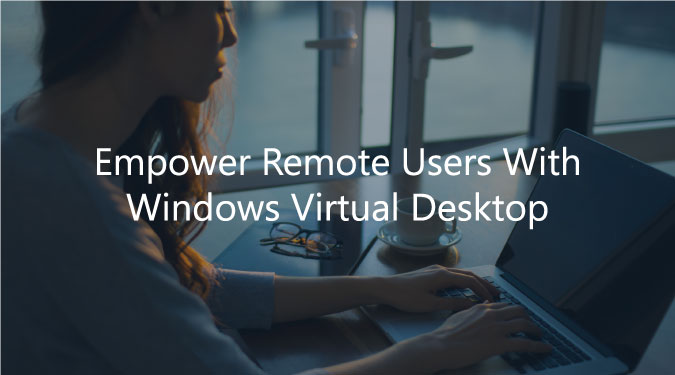Competing in the modern economy requires a modern workforce. Your employees need access to their tools whether they are at their desk, in the field, or working from home. Enter Windows Virtual Desktop.

When you think about traditional remote desktop services (RDS) deployments, words like expensive and complicated come to mind. Typically, the user experience is lackluster in traditional RDS environments, and users may have a sluggish desktop experience.
Windows Virtual Desktop (WVD) is something different. Windows Virtual Desktop is a desktop and app virtualization service that runs on the cloud and can be accessed by users with any device. Similar to how enterprise web-based applications are scaled to employees and customers, with Windows Virtual Desktop you can quickly deploy desktops with the same scalability.
Windows Virtual Desktop allows you to:
- Bring your existing Remote Desktop Services (RDS) and Windows Server desktops and apps to any computer
-
Give users the ability to securely work from anywhere with an internet connection
- Deliver both cloud and on-premise resources (with exceptions)
- Continue running legacy Windows 7 or need to upgrade to a modern OS
- Provide a modern, consistent, and secure Windows 10 user experience
- Automatically provision additional VMs when incoming demand increases and scale back down when demand recedes
- Have multiple users using the same desktop virtual machine at the same time
- Keep employees productive with the same experience as having Windows 10 on their PC
- Continue to use Office 365 tools like OneDrive and Outlook
Windows Virtual Desktop makes sense for you when:
- Remote access needs to be provisioned within days, not weeks, to mitigate the escalating financial impact on businesses
- You're already using Microsoft 365 or Windows 10 Enterprise. Licensing requirements here.
- The remote access solution should be temporary and incur no permanent costs
- Remote desktop in place is slow, and user experience is subpar
- A distributed workforce needs to access confidential files and use LOB apps on unmanaged devices
- The current remote desktop solution isn’t meeting security standards
- There are applications nearing end of support or are already running on unsupported operating systems like Windows 7
- You are in a regulated industry and need to meet strict compliance requirements
- You need to reduce the number of VMs in your environment
With Windows Virtual Desktop, employees can securely connect to their desktop anywhere with internet access. Leveraging Azure Cloud services, iV4 has developed a rapidly deployable virtual desktop solution to implement remote access capabilities.
Learn More: Windows Virtual Desktop Deployment
You might also be interested in:
